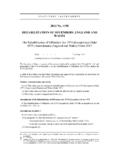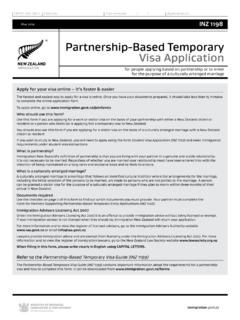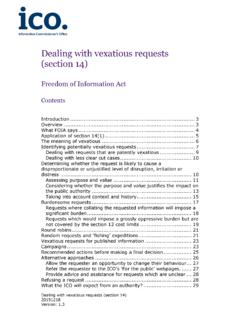Transcription of The use of Soybean Meal and Full Fat Soybean Meal by the ...
1 12th Australian Soybean Conference The use of Soybean Meal and full Fat Soybean Meal by the Animal Feed Industry Sara Willis Department of Primary Industries, Queensland Introduction Soybean meal is a major source of protein used by the pig and poultry industries in Australia. Manufacturers of companion animal foods, such as dog foods, also use Soybean meal in their diets. As well, this versatile protein is being used as a source of protein in aquaculture diets. Soybean meal is an important source of protein for animals due to its excellent amino acid composition and high level of digestibility. The first attempts to feed soybeans to animals were unsuccessful with poor growth observed as compared with feeds containing other sources of protein.
2 In 1917, Osborne and Mendel found that good growth could be demonstrated if soybeans were first heat treated before incorporation into the diet for animals. Later it was found that heating resulted in denaturation of protease inhibitors that interfered with digestion. Because Soybean meal is the principal source of protein for the feed industry worldwide, it has become an ingredient that is strategically traded around the globe every day of the year. Feed manufacturers use Soybean meal as the standard against which other protein sources are compared. Soybean meal has also become the protein source that determines the price of proteins for livestock feeding. Throughout the world, the use of vegetable proteins in animal feeds is becoming increasingly important because of consumer concerns about the health and safety of animal protein by- products and a reduction in fish stocks.
3 This will place further demands upon Soybean meal as a source of protein for livestock. Composition The extent to which Soybean meal is used in diets for pigs and poultry is determined to a large extent by its cost effectiveness in supplying essential amino acids, particularly lysine, methionine and threonine. Several commercial software packages are available to carry out the many iterative computations involved in formulating a diet from a list of 30 or more feed ingredients. Because the availability and cost of feed ingredients are extremely dynamic in the market place, diet formulations constantly change in response to prevailing conditions. Soybean meal is a concentrated source of protein and energy and is lower in crude fibre than most other oilseed meals (Table 1).
4 Table 1. Comparative value of various oilseed meals 1. Crude protein (%) Digestible energy Crude fibre (%). (MJ/kg) 2. Soybean meal full fat Soybean meal Canola meal Cottonseed meal Sunflower meal Peanut meal 1 As-fed basis 2 Digestible energy for pigs -1- 12th Australian Soybean Conference full fat Soybean meal also has these features, but in addition, is an even more excellent source of energy and fatty acids. A comparison of solvent extracted Soybean meal and full fat Soybean meal is shown in Table 2. Table 2. Comparative amino acid composition of Soybean meals Soybean meal solvent Soybean meal - full fat 48%CP. Dry Matter (%) Crude protein (%) Digestible energy (MJ/kg) Crude fibre (%) Available Lysine (%) Available Threonine (%) Available Methionine (%) Available Isoleucine (%) Available Tryptophan (%) Fat (%) Available phosphorus (%) Calcium (%) Diets formulated for growing pigs to supply a desired lysine/energy ratio must take into account a number of factors that influence utilisation of lysine and other amino acids.
5 These include the form of the lysine in the feed and the balance of other essential amino acids. The availability of lysine in a feed is defined as the proportion of the total lysine that is in a form suitable for digestion, absorption and utilisation. Availability is affected by the physical form of the diet, processing conditions, the presence of anti-nutritional factors and the form of lysine. Soybean meal has an excellent profile of essential amino acids and these amino acids are highly digestible. A comparison of the digestibility with other protein sources is presented in Table 3. Soybean meal has the highest lysine digestibility (91%) of any of the commonly available protein sources.
6 It also ranks high in methionine, cystine and threonine digestibility. In addition, the variation in digestibility is less for Soybean meal as compared with other oilseed meals . Table 3. The standardised digestibility values of lysine, methionine, cystine and threonine in various protein sources Standardised digestibility (%). Protein source Lysine Methionine Cystine Threonine Canola meal Cottonseed meal Peanut meal Soybean meal Sunflower meal Source: AmiPig, Aventis Animal Nutrition Production In a typical year, Australia produces about 30,000 tonnes of Soybean meal, yet the animal industries require from 184,000 to 356,000 tonnes of Soybean meal . Due to the severe domestic production shortfall, Australia is a net importer of Soybean meal and imports from 150,000 to 300,000 tonnes/year from the US (Table 3).
7 -2- 12th Australian Soybean Conference In 2002/03, it is likely that Australia will have one of its smallest Soybean crops on record, with the dry conditions severely restricting plantings. Thus, high imports will occur in 2002/03 to make up for the shortfall. Although, the principal Soybean product produced in Australia and imported from the US for the animal feed industry is solvent extracted Soybean meal, there is also interest in using fullfat Soybean meal in animal feeds. Approximately 20,000 tonnes of full fat Soybean meal is produced annually in Australia. Table 3. Oilseed meal usage in Australia (000's tonnes). Range (excluding major drought years). Meal type Typical year Min Max Canola 228 210 246.
8 Soybean 32 32 56. Sunflower 48 42 72. Cottonseed 160 144 224. Total 468 428 598. Plus Imports Soybean 200 150 300. Other 20 10 25. Total Imports 220 160 325. Total Meal Usage 688 588 923. Source: Australian Oilseeds Federation Processing The standard process for solvent extracted Soybean meal production involves a series of treatments. These include cracking, dehulling, flaking, extraction, followed by desolventising and toasting. Fullfat Soybean meal is produced by heat treating Soybean seeds either by steam, followed potentially by extrusion, toasting, and micronising, or jet sploding to produce a high oil, high protein product. Antinutritional factors Natural ant-nutritional factors (ANFs) are found in all oilseed proteins.
9 They are described as non-fibrous naturally occurring substances exerting negative effects on the performance or health of animals (van Barneveld et al., 1997). Soybeans contain protease inhibitors, allergens, lectins, phytoestrogens, lipoxygenase, saponins, oligosaccharides and phytin (Swick 1994). All legumes, including soybeans, contain protease inhibitors. These are plant proteins that bind and inactivate digestive enzymes within the gastrointestinal tract of the animal. Soybeans contain trypsin inhibitors that inactivate the pancreatic enzymes trypsin and chymotrypsin. This reduces protein digestibility and causes pancreatic swelling as this gland attempts to produce more enzymes to make up for the excreted loss.
10 The lost enzymes, being rich in sulphur amino acids, further reduce the amino acid status of the animal. Proper heat treatment in combination with the correct moisture level destroys the trypsin inhibitors. For Soybean meal this is accomplished in the desolventising/toasting chamber. In the case of full fat Soybean meal, the most common method is extrusion. Insufficient heating, or under-processing, of Soybean meal negatively affects amino acid digestibility because the anti-nutritional factors are not adequately destroyed. Excessive heating, or over-processing negatively affects amino acid digestibility because a portion of the amino acids have either been destroyed or tied up as indigestible, bound compounds.









